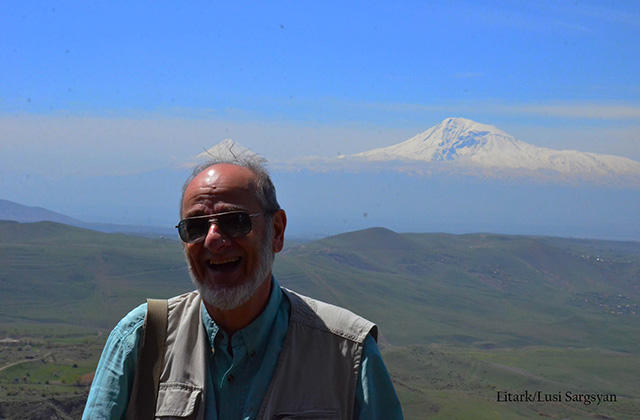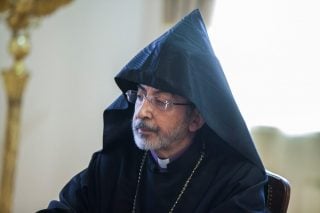
Assessing Armenian’s Geopolitical Situation

Armenia is at yet another critical time. The war losses were substantial and impacted greatly. Violent Azerbaijani-Armenian border incidents continue, with property damage, military personnel injuries and deaths. The risks ahead are significant. Accordingly, it is crucial to assess the geopolitical situation that confronts Armenia, commencing first with key problems and challenges and then exploring some opportunities.
Amongst the pressing issues is the fact that demographically Armenia has far less manpower than Azerbaijan, even if women were conscripted too. Armenia’s population has been declining significantly due to outmigration and this pattern has been accelerating after the recent Karabakh war and various phases of the Covid pandemic. An army historically based on conscription needs to address its critical declining population base.
It is a harsh economic reality that Armenia cannot outspend its oil-rich bitter rival Azerbaijan. To make matters worse, Armenia has been hard hit by a tourism income decline caused by both the pandemic and the war.
The joint Turkish-Azerbaijani hostility to Armenia is a huge and dangerous disadvantage for Yerevan’s military and diplomatic strategists. There exists not only an ongoing risk of a dreaded two-front war, but the distances between the borders and the capital are incredibly short, with the resulting time frame frighteningly compressed, particularly with advanced aerial weapons.
The Armenian military is still largely characterized with legacy Soviet ways of thinking. A more modern and dynamic military strategy is needed. Out of necessity, there has been heavy reliance on Russian equipment that is often older and of inferior technology. Recently much of the key military hardware was destroyed, damaged or captured in the 2020 Karabakh war. Newer and more advanced systems are urgently required, despite the government’s substantially constrained financial budget. Instead of less trained, short-duration conscripts, a full-time career professional armed forces is required.
Despite the shared trauma of the past history of the Ottoman Young Turk genocide of a million and half Armenians killed and vast numbers of others displaced globally, the internal political dynamics of Armenia and its Diaspora are heavily polarized and divisive. In too many ways, it is a self-destructive pattern that only increases the overall risks to the future survival of the Armenian nation.
Russia is currently the foremost ally for Armenia, but Moscow’s relations with Yerevan are also problematic on several fronts. As a historic imperialist state, the interests of Russia were paramount, but too often at the expense of local nationalities in the South Caucasus, including Armenians. The dynamics are such that it must be asked: ‘Are Russia’s long term and short term interests fully compatible with Armenia’s?’ The historic record is mixed. Russia played a key role as a place of refuge during World War One when survivors escaped from the Ottoman Turk’s mass slaughter of Armenians, However, past Soviet-Turkish treaty negotiations have been at the territorial expense of Armenia. In the 1920s, Moscow was also willing to place Nagorno-Karabakh, with its majority Armenian population, under the republic jurisdiction of Azerbaijan within the Soviet Union. Even in the last decades of the Soviet Union, Kremlin leaders refused appeals of Karabakh Armenians to be able to join with the Armenian soviet republic. More recently, while Russia has helped subsidize arms shipments to Armenia, it has also troublingly provided substantial military equipment to Armenia’s main enemy of Azerbaijan. In the last year, Russia apparently balked at its treaty obligations to fully resist any territorial aggression by Azerbaijan against Armenia. On the other hand, there is little doubt that Russian troops on the border between Armenia and Turkey, particularly at the military base in Gyumri, have acted as a nuclear tripwire significantly protecting Armenia from potential major Turkish aggression. There is absolutely no doubt that the Armenians of Nagorno-Karabakh were in grave jeopardy in the closing days of the 2020 Karabakh war and that today they are protected only by a thin line of Russian peacekeepers. The long-term future of Karabakh is still uncertain. A further mass Armenian exodus is still possible, particularly when the projected peacekeeping cessation deadline approaches in several years. While recent ceasefires have been brokered by Russia, problematic violations by Azerbaijan continue. As a result, the situation is troubling for Yerevan’s military and foreign policy planners and is tense amongst many Armenian border communities.
On the positive side of the assessment ledger, there are Armenian literacy and educational levels. The Armenian civilian university graduates are well educated and inquisitive. Overall, there is a high level of education in a relatively free society. The global internet access is extensive, particularly in the capital Yerevan, and the younger generation is increasingly acquiring English language capabilities. This is a positive development in the fostering of Armenian citizenry interacting with a global community.
One challenge that exists, however, in how to bridge the gap between the more pluralist Armenian civilian scientific community and the highly centralized military educational institutions and planners? Historically the latter have been far less open to new and innovative ideas. Greater use of joint academic workshops, exchanges of university faculty and the creation of national and international think tanks might begin to lessen this civilian-military gulf.
Probably the best long term security hope for Armenia is greater technological innovation reinforcing the important and ongoing scientific revolution in military affairs. One observes the pivotal historic role of two pioneering civilian academics: the British mathematician Alan Turing’s brilliant work on deciphering enemy military intelligence by means of a remarkable breakthrough in computing science and the American physicist Robert Oppenheimer’s legendary work on nuclear fission in the development of the world’s first atomic bombs. Combined these two revolutionary technological breakthroughs greatly altered and ultimately determined the outcome of World War Two. The 2020 deadly drone war over the skies of Karabakh and the South Caucasus was a grim reminder of how revolutionary new intelligence and weapons technology can swiftly and decisively alter the outcome of a war. It is clearly evident that Armenia needs to more effectively tap into the cutting edge advances of the global scientific community. This can be encouraged through greater partnership with potential technologically advanced allies and friendly states.
Moving from dramatic changes in the natural sciences to that of the social sciences, one can assess the strengths and weaknesses of a different societies and their forms of governance. Dictatorships are excessively dependant on one strong man, drawing heavily on top down decision-making and arbitrary rule maintained by extensive coercion and fear. Both Azerbaijan and Turkey are currently highly autocratic regimes. Their leaders seem firmly entrenched at the moment. Any public dissent is crushed. Yet, the leaders possess a potentially vulnerable Achilles heel of the threat of democratic revolutions from below overthrowing the brutal ‘ancien regime’. Perhaps more likely ill-health and incapacitation of the aging authoritarian leader may become an issue in the long run. Both countries have significant ethnic minorities suffering stifling repression. A more vibrant civil society in these two countries ultimately could be a positive development for the region as a whole, however, such changes seem unlikely in the foreseeable future. Instead, today an excess of domestic political violence prevails over peaceful civil society, with profound spill over implications on those two countries’ defence and foreign policies. Armenia, as a neighbouring rival state, is wise to be concerned by the autocrats’ increased territorial ambitions, aggression and risk-taking. Recent border incidents and incursions by Azerbaijan suggest Aliyev is not sufficiently content to have decisively won the 2020 war and reclaimed important territory. He has declared he wants more. These are ominous words for Armenians who are apprehensive that Baku’s ultimate goal is genocidal annihilation of Armenians in the South Caucasus. In such a hostile and conflict-filled atmosphere, the chances of peace in the region seem slim to non-existent.
Armenia has much to be fearful about, but Armenians historically know something about survival. However, survival is not enough. The goal should be to flourish in a better and more just world. It seems a different path is ultimately required.
Perhaps important lessons can be learned from elsewhere in Europe. After generations of horrific wars between Germans and French in the 19th and 20th centuries, a few brave and bold visionary statesmen (including French government officials Jean Monnet and Foreign Minister Robert Schuman) came together at the end of World War Two and sought to change the historic pattern of repeated conflicts. Looking to a better future, they sought to turn swords into ploughshares. And so, the German and French steel and coal industries, once crucial nationalist engines of war, were brought into a new more internationalist functional integration that would transcend national boundaries. Out of this foundational economic organizational pillar of the European Coal and Steel Community (1951) would eventually emerge the European Common Market (1957) and later still the European Union (1993). Even other former warring states were brought into the growing community and established a vast regional integration that would eventually span most of the European continent. The goal in the 1950s was not merely to survive from the last war, but to thrive in a better tomorrow. For the sake of the next generations of children, they chose a different path. The choice between war and peace remains paramount in 2021.
Alan Whitehorn
Alan Whitehorn is a professor emeritus of political science and writes on Armenia and the South Caucasus.
July 26-31, 2021























